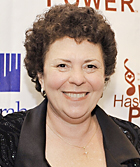
The prospect of Alzheimer’s disease is one of the most frightening that people encounter as they and their loved ones age. It is after all, the loss of one’s memories, one’s sense of self and, ultimately, one’s ability to function on any self-sufficient level.
If we are watching the disease take its toll on a parent or spouse, particularly if we take on the role of even part-time caregiver, our immediate concerns are to keep them safe and stave off the inevitable for as long as possible. As the daily reality unfolds, it is often compounded by the fear that a similar fate may be in store for us.
Indeed, forecasters tell us that the number of people afflicted with Alzheimer’s disease will increase exponentially in the coming years, with some estimates topping ten million among the aging U.S. baby boomer population alone.
Those of us who wear an additional hat as professional long-term caregivers—whether on the front lines or in a management and administrative capacity—are faced with the reality of this burgeoning population, the people who love them and who look to us for answers, for treatment and for hope. The reality is that treatment and care for people with Alzheimer’s disease is destined to be a long-term care challenge for the coming decades.
At the Institute for Music and Neurologic Function (IMNF), technology is playing a key part in helping people with Alzheimer’s disease reconnect to their memories and their loved ones—if only for immediate periods of time. We call it our “Well-Tuned” program and its impact has been extraordinary.
The technology I mentioned is the iPod, which can be loaded with music that is emotionally significant to the individual with Alzheimer’s disease. The music may spur memories thought long gone or stimulate recognition of a loved one that moments earlier was no more than a blank face. It may also help a person with Alzheimer’s disease function and transition throughout the day, from energizing them during their waking hours to helping them wind down as bedtime approaches.
The iPod music play list is customized, changing from person to person based on their experiences, cultural backgrounds and frame of reference. As with lovers who grow sentimental when “their song” is played on the radio, the right music stimulates the personal associations that it is connected with, sparking memory and renewed “presence.”
When the person afflicted with Alzheimer’s disease is non-verbal or can no longer communicate which music comprises the soundtrack of their life, family members and friends are engaged in the Well-Tuned process and help to assemble the autobiographical play list.
The clinical reasons that this type of therapeutic music works have to do with the emotional connection to music made throughout our life. It also has to do with areas of the brain that are involved in emotion, association and long-term memory processes that are stimulated by personally important music.
These areas include the limbic system (the amygdala and hypothalamus) and the medial prefrontal cortex. These areas and the neural networks that link them can still be stimulated through the auditory pathways in people with Alzheimer’s disease and dementia. For this reason, key musical selections that are linked to emotional and personal memories can unlock memories and associations that had seemed lost forever.
The Well-Tuned musical selections also enhance the therapeutic value of other treatments. One musical menu might create stimuli to make it easier to participate in an exercise program, while another more “transitional” selection of songs is designed to keep the patient mobile over the course of the day. Still another program works to relax patients whose medications might make them hyperactive or agitated.
The presence of a Well-Tuned program, whether at long-term residential facilities, adult day care centers, in-home care programs or in assisted living environments, may well be a motivating factor when families are deciding whom to entrust with their loved one’s care and future. The IMNF works with rehabilitation centers the world over, training caregivers in state-of-the-art, effective music therapy techniques.
Is Alzheimer’s disease caused by environmental factors, genetic predispositions, some combination thereof, or simply because as people live longer lives, there are greater opportunities for it to present itself? Those questions and why Alzheimer’s disease is on the upswing will no doubt be sorted out by science and scientists in the years to come. But when a loved one turns to us as healthcare professionals and long-term caregivers and we are able to give them one more opportunity to connect with a parent, a spouse, a sibling or a friend, that is truly, music to our ears.
We recommend that long-term care facilities find a trained music therapist who can not only provide therapy, but also consultation to the staff about how to use music therapeutically in other aspects of care, such as pain management or relaxation methods.
We welcome the opportunity to share the methods, mechanics and aspects of building Well-Tuned programs at other facilities. The costs involved are modest and can be customized to meet most budgets. Professional training can take place at IMNF headquarters in New York, or on-site at your local facility.
Dr. Concetta M. Tomaino, D.A., MT-BC, LCAT, is a pioneer in the field of music therapy for individuals suffering the effects of stroke and other brain trauma or are afflicted with such degenerative neurological diseases as Parkinson’s or Alzheimer’s. Tomaino is the executive director and co-founder of the Institute for Music and Neurologic Function and senior vice president for music therapy at Beth Abraham Family of Health Services.
To learn more about Well-Tuned and other IMNF programs, send an e-mail to [email protected], or call (718) 519-5840 or (888) 792-2247.



